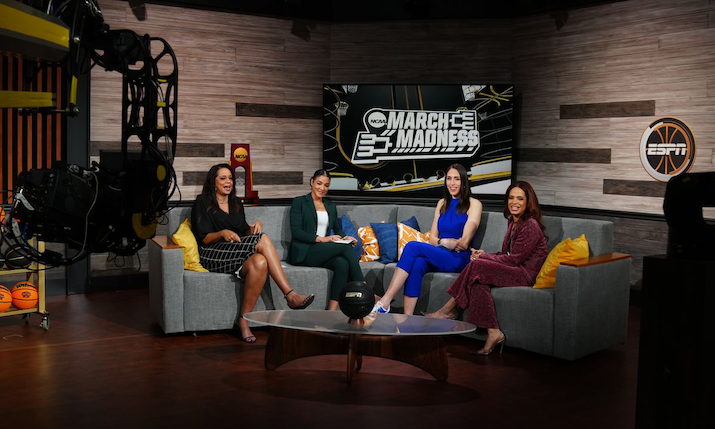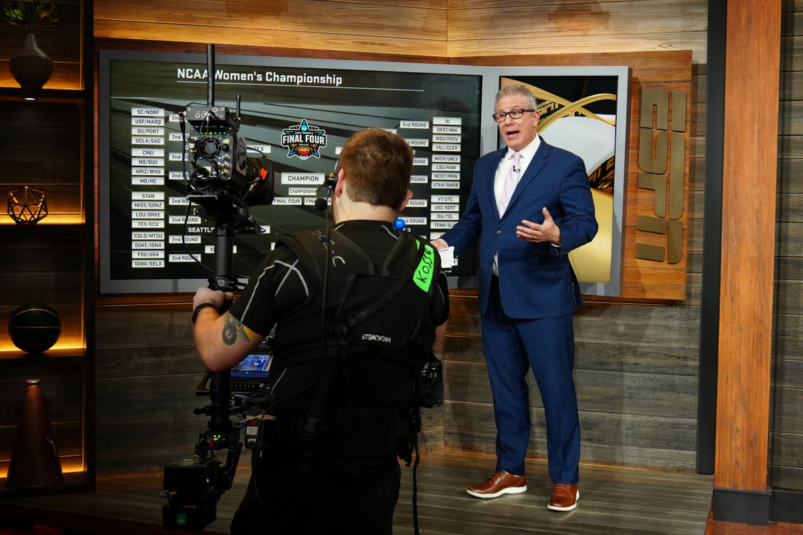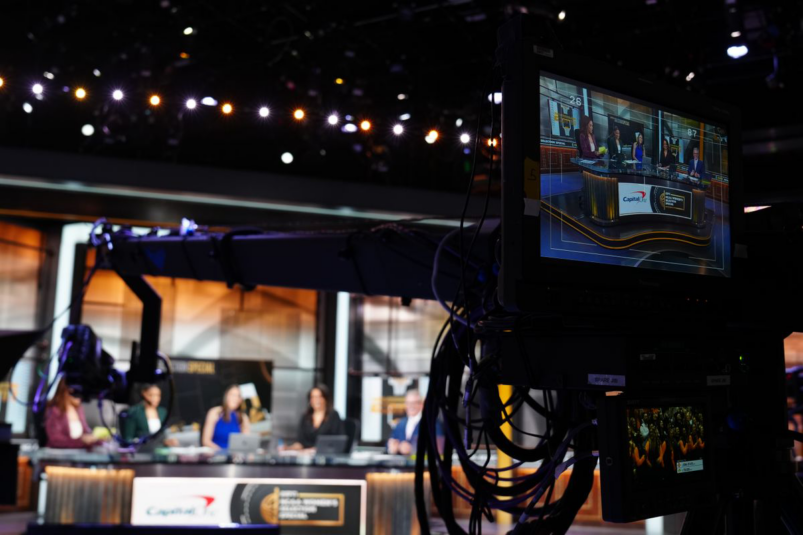ESPN Streamlines Operations in Covering NCAA Women’s Basketball Tournament
For the first time, there are just two Regional Sites for the Sweet Sixteen and Elite 8
Story Highlights
The NCAA Women’s Basketball Tournament rolls into the Sweet Sixteen beginning today. For the production team at ESPN, in its 28th year broadcasting the entire tournament, it has already been one of the maddest of Marches.
For the first time in a quarter century, only two No. 1 seeds advanced to the Sweet 16: one, South Carolina, is gunning for a perfect season; the other, Virginia Tech, is looking to advance to the Final Four for the first time in program history. Sprinkle in megastars like Iowa’s Caitlin Clark, South Carolina’s Aliyah Boston, and UConn’s Azzi Fudd (yes, the always dangerous Huskies are still lurking), and the race to Dallas for the Final Four is shaping up as an entertaining one.

For this year’s NCAA Women’s Basketball Tournament, ESPN has two studios and two control rooms providing shoulder programming around game coverage. From left: Carolyn Peck, Andraya Carter, Rebecca Lobo, and Elle Duncan host coverage of the NCAA Women’s Selection Special from Studio E on ESPN’s Bristol, CT, campus. (All photos: Kelly Anne Backus/ESPN Images)
To meet the demands of this year’s tourney, ESPN made some adjustments to its operational plans to ensure topflight coverage for every game. That included tapping into multiple flavors of production workflow to cover games from 16 sites and deploying two studios and two control rooms to keep its Bristol, CT-based shoulder programming humming.
“It has been just a lot of fun,” says Pat Lowry, VP, production, ESPN, and one of the leads on the NCAA Women’s Basketball Tournament project. “Watching that Stanford–Ole Miss game and seeing the [upset] there, I was tired [the next day] because it got me all amped up and then it’s time to go to sleep and do another day tomorrow.”
For the busy opening weekend, there were many moving pieces for ESPN. The multiple production workflows were used to produce live games, and the multiple studios and control rooms in Bristol met the event’s pregame, halftime, and between-game needs.

Analyst and “Bracketologist” Charlie Creme provided a breakdown of the Women’s Bracket on the set of the NCAA Women’s Selection Special.
For game production, six sites were produced as onsite truck shows, while four used REMI workflows. ESPN also enlisted two school control rooms — at Virginia Tech and Notre Dame — to handle game production at those campuses.
The opening week of the tournament was a logistical and operational marvel. Unlike the men’s tournament, where First and Second Rounds occur at preselected neutral venues, the women’s tournament plays games on the campuses of the top four seeds. Additionally, the site of the First Four in the Women’s Tournament isn’t determined until Selection Sunday; on the men’s side, the University of Dayton has hosted the First Four since its inception in 2011 (the one exception was in 2021, when the entire NCAA Men’s Tournament took place in the state of Indiana).
A streamlined operations workflow — spearheaded by Remote Operations Supervisor Catherine Carroon, Remote Operations Producer Traci Flohr, Tech Operations Manager Jim Birch, and Coordinating Producers Beth Chappell and Matt Leach — has the ESPN team in cruise control entering the Regional Round in anticipation of a big blowout at next weekend’s Final Four.
“We’ve added outdoor sets and new things [at Final Four] ,” says Lowry, “so [the team has] had to continue to jump through hoops and make adjustments. It’s terrific to work with people like them.”
The lead producer/director team of Kerry Callahan and Jimmy Platt didn’t work any games of the First and Second Round. Lowry says the goal was to allow them to sit back and take in the full tournament field and absorb the emerging storylines and stars. They will be working the Seattle regional site this weekend before advancing to work the Final Four in Dallas. Having Callahan and Platt focus on the big picture of the tournament and its higher-pressure later rounds allowed Lowry, as well as Chappell and Leach, to focus on executing the large scale of the overall field, especially those First and Second Round games.

ESPN’s Bristol campus has been home to two separate studio shows for coverage of the NCAA Women’s Basketball Tournament. ESPN also used REMI workflows to support game production from four sites during the First and Second Rounds.
With this weekend’s games, the logistics are a bit simpler for ESPN. For the first time in the tournament’s history, there are just two regional sites: Greenville, SC, and Seattle.
According to Lowry, Platt and Callahan will be experimenting with some new lenses and specialty cameras in Seattle to see if those units will make their way to the Final Four in Dallas.
“If I could handpick anybody in the country to direct the Final Four, I would handpick Jimmy Platt,” says Lowry, “because of his complete understanding of technology, his ability to work with the NCAA, and his ability to just direct the hell out of a show.”
Although the Regionals are condensed into two sites, ESPN is still crewing out from the perspective of four regionals. There are four producers, four graphics producers, and four sets of talent splitting up the games at both Seattle and Greenville. There will be two sets of directors and assistant directors because those positions will work every game at their geographic site.
From a crewing perspective, it’s kind of a split version of what we would normally do,” says Lowry. “It’s our first time, so I guess we’re going to see how effective it is. But we always wanted to make sure that we have the ability to focus on storytelling and spend time with the coaches and student athletes.”
Coverage of the NCAA Women’s Basketball Tournament resumes Friday as the Sweet Sixteen begins with No. 9 Miami vs. No. 4 Villanova at 2:30 p.m. ET on ESPN. For the full schedule, CLICK HERE.
